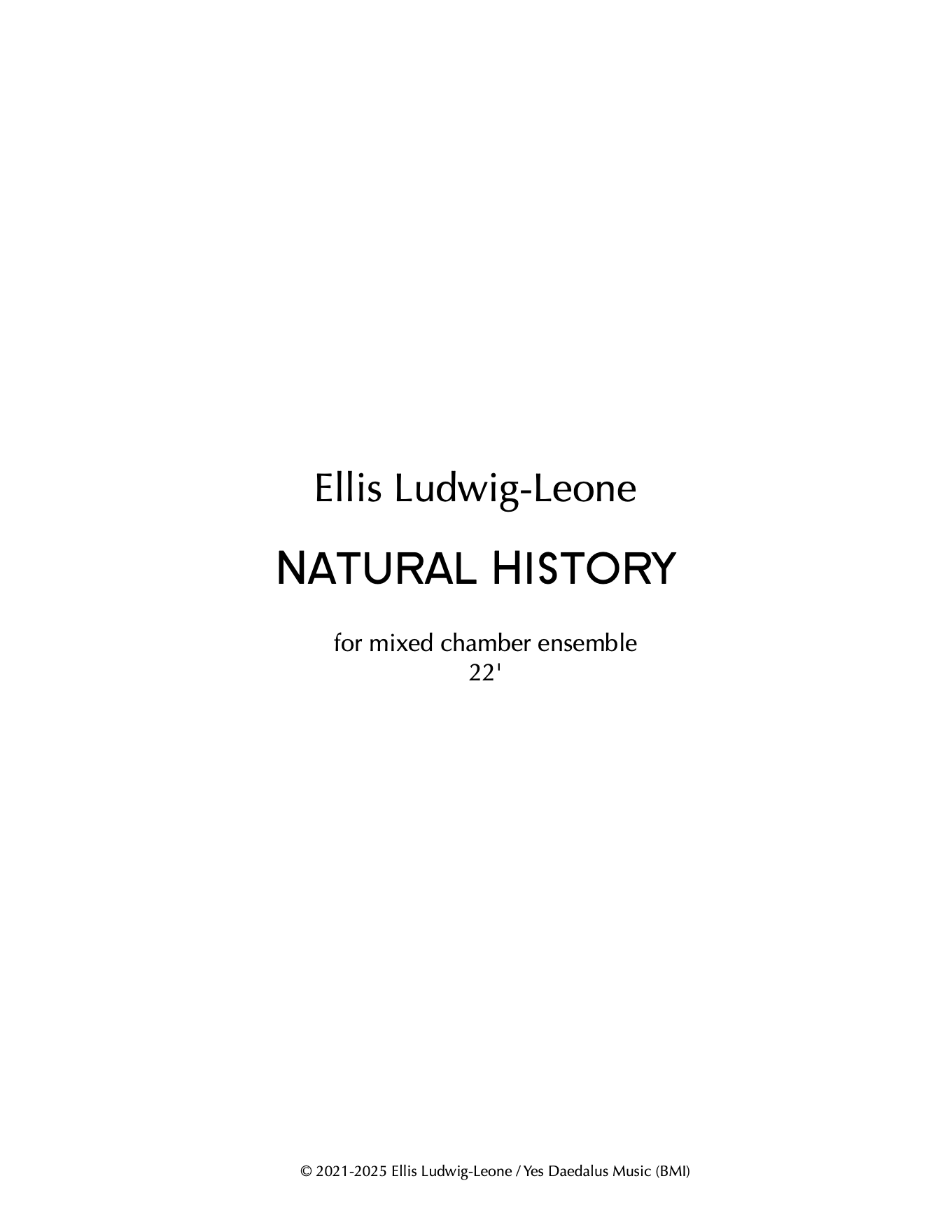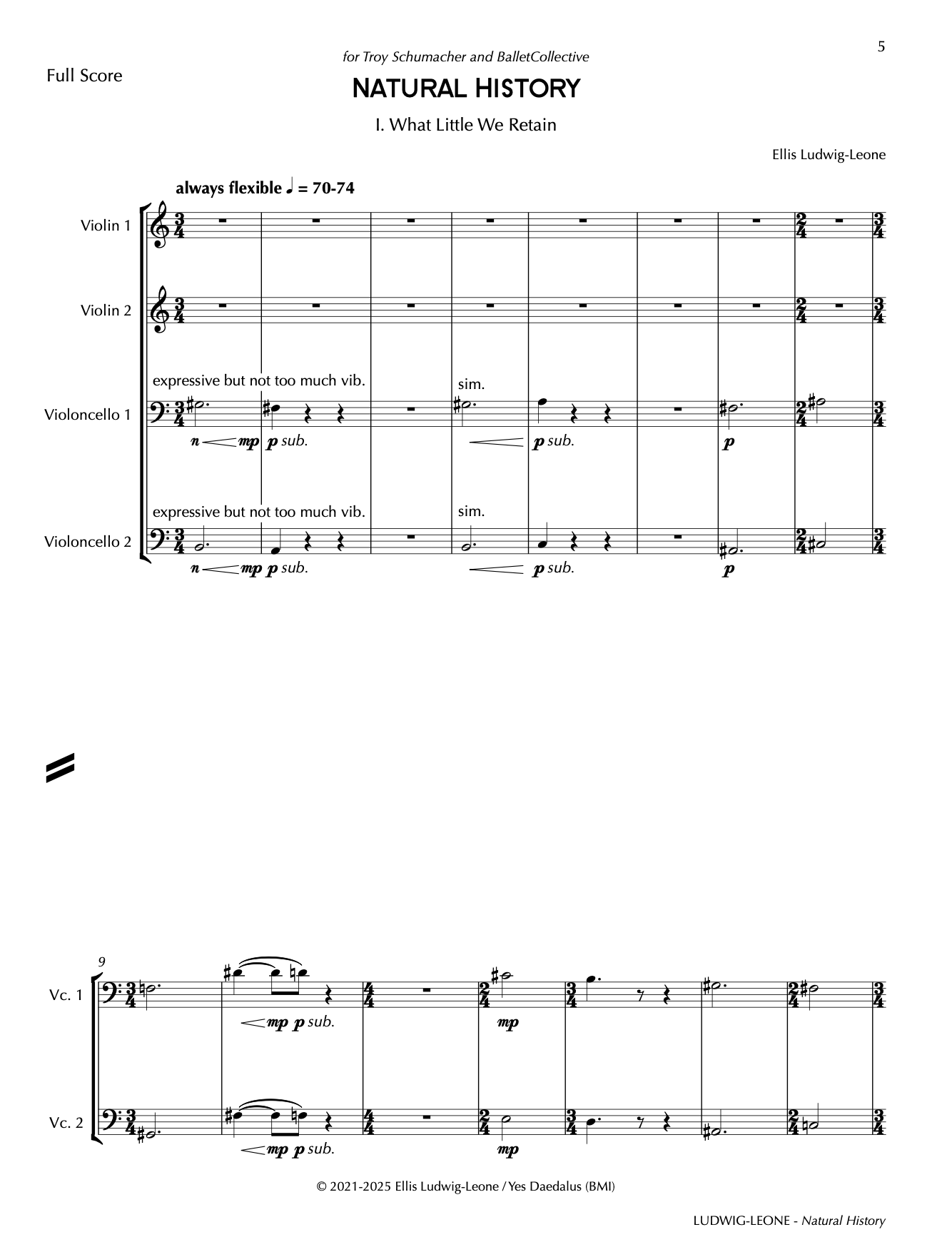8 players: fl, cl, pno, perc, 2 vln, 2 vc - Natural History
8 players: fl, cl, pno, perc, 2 vln, 2 vc - Natural History
Couldn't load pickup availability
Ensemble: flute, clarinet in Bb, piano, vibraphone, 2 violins, 2 cellos
Duration: 22 minutes
Commissioned by: Troy Schumacher & BalletCollective for The Knights
Premiered: Bohemian National Hall, New York City, New York
Note:
Natural History was commissioned as the score to a new ballet by Troy Schumacher for his company BalletCollective. Due to the pandemic, the music was recorded before it was ever performed live, and the recording was premiered via FM radio to audience members in their cars as they watched the live dancers on an outdoor stage, like a drive-in movie. I was later informed that it was the first performance of a ballet in North America after the world shut down.
Both movements of this piece are inspired by original poems by Carey McHugh, written after visiting the Museum of Natural History in New York City. I’ve always loved that museum, especially the uncanny dioramas, little moments pulled out of time and preserved forever. As a kid, I enjoyed finding the hidden secondary dramas in each one: a squirrel curled in its burrow, a desiccated fish suspended in blue plastic water, a rattlesnake eying a jackrabbit in the corner. I was captivated by the strange relationship between these creatures—frozen forever between life and death—and their painted backdrops, which created a suspended limbo space for these imagined dramas.
This piece, like those dioramas, exists in a state of tension between past and present. The first movement is an elegy for the strings, ghostly and jagged—a partially preserved memory of a life long gone. The second movement is derived from the same musical information, but is set for all eight instrumentalists, muscular and energetic: the living, breathing version of the same taxidermied creature.
If—to quote one of Carey’s poems—“a diorama is one kind of memorial,” my experience during the pandemic made it clear that art is another. It was both wonderful and sad to write this piece during the darkest days of that time, and to see it performed and danced during a moment in which physical contact with another person was a scary experience. In the leadup to the premiere, the dancers had to spend a month with each other isolated in upstate New York, and it was moving to see how a lament for the past could become a reason for hope and togetherness. I am grateful to Troy Schumacher for making that a reality, and to the dancers of BalletCollective for the incredible effort they put into making it possible.
Share



